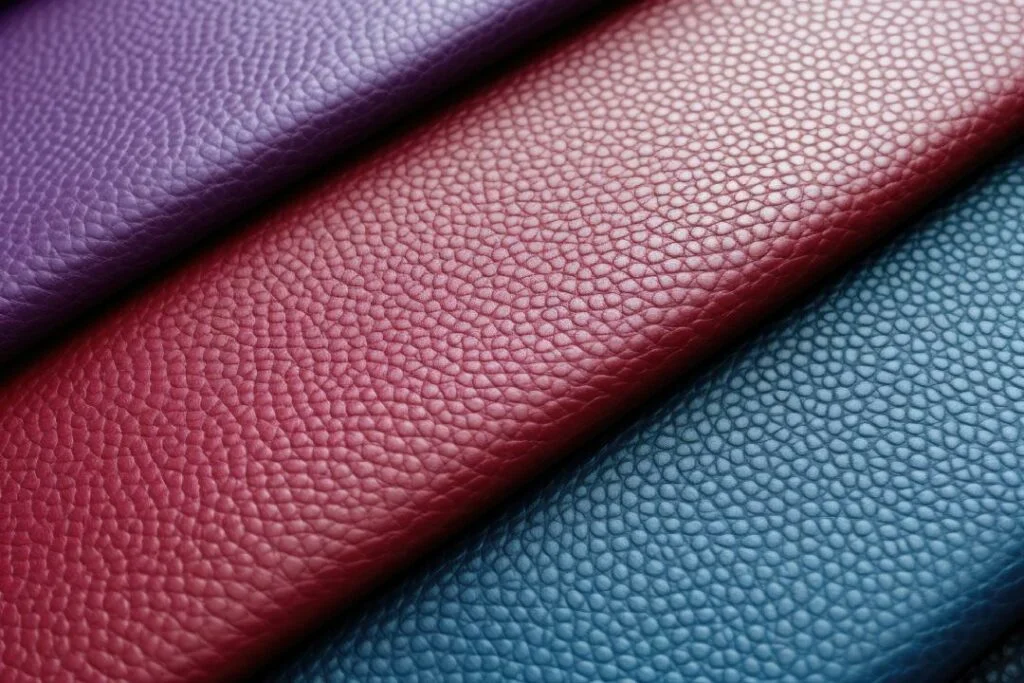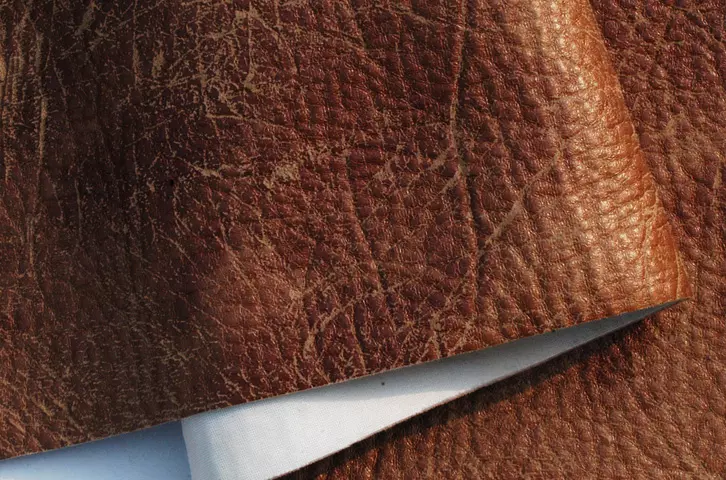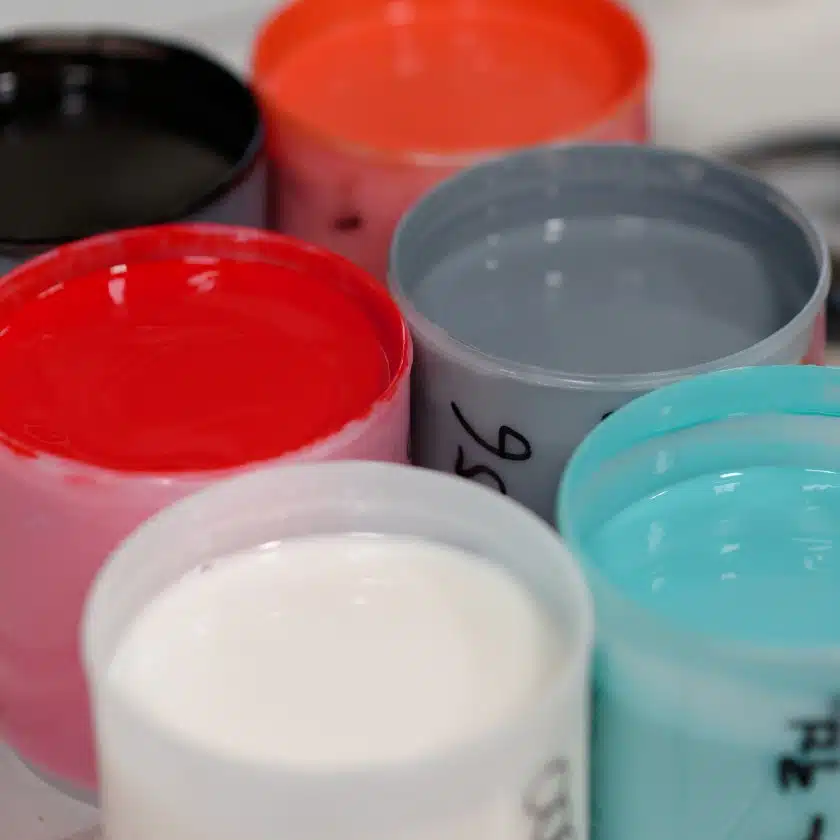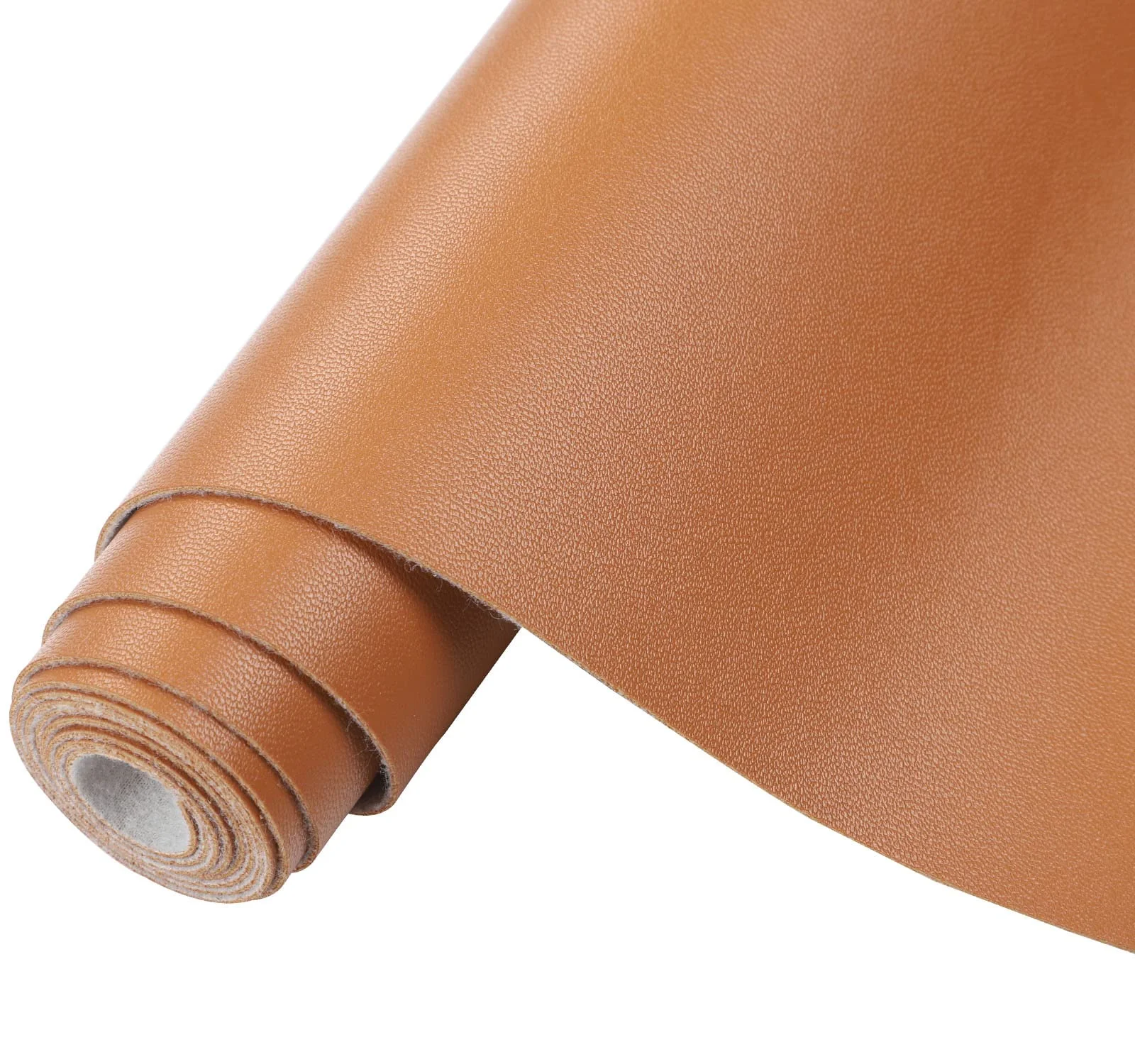07 March, 2025
The PVC leather or synthetic leather or artificial leather is a familiar material in industries like automotive, furniture, and fashion. It is a durable, flexible, and easy-to-use alternative for genuine leather with its flexibility, wear and tear resistance. The reason for the growing popularity of PVC leather is that it closely resembles true leather but at a cheaper price and easier maintenance.
Yet, how is PVC leather made? There’s no rocket science into the manufacturing process as it is done by following various steps, which include a selection of high-quality raw materials and the application of protective finishes to make the product doubly durable. This comprehensive guide will walk you through the entire process of producing PVC leather so that you understand this material is made with the help of different industry needs.
What is PVC Leather?

It is synthetic PVC (Polyvinyl Chloride) leather is a synthetic material that looks and feels like real leather. Dipped in a specially formulated PVC paste and processed to various textures, finishes and colors, it is produced by coating a fabric backing. Unlike natural leather, which essentially all comes from animal hides, PVC leather never involves any animal cruelty.
Advantages of PVC Leather
Compared to genuine leather, PVC leather offers several benefits:
-
Affordable: Compared to real leather, it is extremely cheap, hence its outreach is more.
-
Water-Resistant: Not Like Genuine Leather: PVC Leather is not like genuine leather, which can absorb moisture as well as stain.
-
Easy to Customize: Easy to come in a wide variety of colors, textures and finishes so that the manufacturer can tailor the products according to specific design requirements.
-
Durable and Low Maintenance: Stain and scratch resistant, UV damage resistant, durable and low maintenance.
-
Eco-friendly Versions: Many manufacturers are now offering low-VOC and phthalate-free versions to reduce environmental impact.
To continue, we will study the step-by-step manufacturing process of PVC leather.
Step 1: Raw Material Selection

Faux synthetic leather, or often artificial leather or PVC leather, is produced starting from the careful choice of material. Raw materials are of high quality which guarantees that the final product is durable, flexible and visually appealing. The primary components used include:
-
PVC Resin – This form the structural base of synthetic leather provide Strength and longevity come from this material, PVC Resin.
-
Plasticizers – Increased softness and flexibility is given by using plasticizers, so the material continues to be soft and flexible.
-
Pigments and Dyes - These pigments and dyes are used to get a host of colours and finishes for the manufacturers so that they can have varying styles.
-
Stabilizers – Heat resistant and UV resistant stabilizers – ensures that the material does not degrade prematurely.
-
Backing Fabric – Additional strength and support are added by this back fabric. Typically made from polyester, cotton or non woven fabric, the PVC is coated onto it.
Appropriate selection of raw materials in selecting raw material for PVC leather, such as determining the texture, quality, and durability of the final PVC leather product is directly related.
Step 2: PVC Paste Formulation

Once the raw materials are selected, the next step is creating the plastisol paste, a thick, viscous mixture made by blending:
-
PVC resin – Forms the base of the plastisol.
-
Plasticizers – Ensure the material remains flexible and soft.
-
Stabilizers – Enhance durability and resistance to environmental factors.
-
Pigments – Provide color and aesthetic appeal.
It is carefully formulated to accommodate different needs, for instance, embossed designs or smooth paper finishes. The flexibility, texture, colour of synthetic leather are determined by the plastisol paste. A proper balance goes a long way not just in maintaining the quality and performance of PVC leather, but also so that it adheres strictly to the industry standards and requirements.
Step 3: Coating the Release Paper with PVC Paste

The coating process plays a crucial role in defining the surface characteristics of PVC leather. This step involves multiple layers of application to ensure the right thickness, texture, and durability.
1. Application of the Top Layer
-
The first layer of plastisol is coated on release paper with the design that the user wants (smooth finish or grain pattern).
-
The decorative surface of the PVC leather is formed by this layer that giving the PVC leather its aesthetic appeal
2. Foam Base Layer Formation
-
Next, on the top layer, a second layer of plastisol foam is applied.
-
This layer’s thickness is adjusted based on what the product with which we are dealing uses a textured embossed pattern, or a smooth paper design finish.
3. Adhesive and Backing Fabric Application
-
It refers to bonding the backing fabric with the coated layers by an adhesive layer.
-
In this way, the fabric and the synthetic leather layers are well connected.
4. Embossing or Paper Transfer
-
Embossing rollers press the material in order to produce grain patterns or embossed texture if required.
-
The texture on the release paper is directly transferred onto the surface in case a smooth finish is preferred.
5. Lamination and Curing
-
The layers are bonded together under heat and pressure to achieve proper bonding.
-
The plastisol layers are solidified and strength and flexibility are improved by curing the material in an oven.
6. Cooling and Paper Removal
-
The final texture and finish are set then the material is cooled.
-
After being carefully peeled, the release paper releases either a textured or smooth surface.
This process ensures that PVC leather has the desired flexibility, strength, and visual appeal required for various applications.
Step 4: Surface Finishing and Protection

A protective topcoat is used to improve the durability, texture and usage of PVC leather. This coating provides multiple benefits:
-
Scratch and Stain Resistance: Prevents minor damages and improves longevity.
-
UV Protection: Maintains Color: Protects color by suspending fading.
-
Enhanced Appearance: Different finishes like glossy, matt, or semi-matt have been used according to aesthetic requirements.
The surface finishing of the PVC leather is chosen based on the application the PVC leather will be used for. Luxury goods as a rule tend to use gloss finishes, automobiles and furniture upholstery are usually matt finishes.
Step 5: Cutting and Packaging

Once the PVC leather has passed quality inspection, it is prepared for distribution.
1. Cut into Rolls
-
Rolls are of different lengths based on customer requirements.
-
Thickness is customized for various industries like automobile, furniture and fashion.
2. Final Quality Check
-
The rolls are checked for defects including color inconsistencies, air bubbles, or surface imperfections.
3. Packaging and Distribution
-
The rolls are packed in a way to avoid damage during transportation.
-
However, they are shipped to manufacturers who use them in several applications.
Arton Leather: A Trusted Leather Manufacturing Brand
Arton Leather is an established manufacturer and supplier of quality artificial leather in the industry of furniture, automotive, fashion, footwear and such. Notably, the company knows its business in providing a choice array of synthetic leather, ranging from PVC leather that resembles real leather at first glance. Some of the various textures including embossed patterns and paper designs are offered by Arton Leather so choose from as many options as possible. Customers have a choice of several thicknesses from 0.6mm right through to 1.4mm and also of finishes such as matt, gloss, semi-gloss, and soft-touch surfaces.
Moreover, Arton Leather also has a vast palette of colors in its range of colors including classics such as black and brown, but there are also red, blue, yellow, and other colors. Propelling its innovation, durability, and eco-friendly productions, Arton Leather with its strong focus in all respects is engaged in making customized artificial leather solutions for global industry standards. Arton Leather provides synthetic leather for any use, from high-performance and aesthetically pleasing upholstery to stylish handbags, and durable automotive interiors.
Conclusion
It is very versatile and durable PVC leather is a very good, well-priced alternative to genuine leather. The step-by-step manufacturing process guarantees that it does enough to the diverse requirements of different industries all over the world. With technology, eco-friendly PVC leather options are also available now.
PVC leather still has the position of a leader in the synthetic leather market and can be used in car interiors, handbags, furniture, and fashion accessories. Since you now know how it is made, you can now understand the full level of the craftsmanship that went into making this innovative material.



